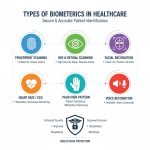Global Air Ambulance Market to Reach USD 14.63 Billion by 2035, Driven by Technological Advancements and Rising Demand for Critical Care Transport
The global air ambulance market is poised for significant growth, with projections indicating an increase from USD 7 billion in 2024 to USD 14.63 billion by 2035, at a compound annual growth rate (CAGR) of 6.95% from 2025 to 2035. This expansion is fueled by technological innovations, rising healthcare needs, and increased demand for rapid medical transport. Air ambulances, including rotary-wing (helicopters) and fixed-wing aircraft, provide timely transportation for patients from accident sites, remote locations, or between medical facilities. With advancements in telemedicine, GPS tracking, and onboard medical equipment, these services are becoming more efficient and reliable. Expanding healthcare infrastructure, supportive government initiatives, and urbanization are further fueling the market, positioning air ambulance services as a crucial component of modern healthcare delivery.
Our comprehensive Air Ambulance Market report is ready with the latest trends, growth opportunities, and strategic analysis. View Sample Report PDF.
Key Takeaways
- The air ambulance market is expected to grow from USD 7 billion in 2024 to USD 14.63 billion by 2035, at a CAGR of 6.95% from 2025 to 2035.
- The Fixed-wing segment held a market share in 2024 and is anticipated to continue its dominance due to its suitability for urban and remote area access.
- Hospital-based air ambulance services are projected to grow at a CAGR of over 9.5% till 2034, driven by advancements in medical technology and real-time patient monitoring during transport.
- North America dominated the market with largest market share in 2024, while the Asia Pacific region is expected to experience the fastest growth during the forecast period.
- The adoption of advanced technologies, including telemedicine, GPS tracking, and automated dispatch systems, is enhancing the efficiency and effectiveness of air ambulance services.
Premium Insights
The air ambulance market encompasses services that provide emergency medical transportation via aircraft, including helicopters and fixed-wing planes. These services are critical for transporting patients from accident sites, remote areas, or between medical facilities. The market is influenced by factors such as the prevalence of chronic diseases, aging populations, and the need for rapid response in emergency situations.
The global air ambulance market is evolving rapidly due to the integration of advanced technologies, such as telemedicine, GPS-enabled tracking, automated dispatch systems, and AI-assisted route optimization. Increasing demand for emergency medical services and critical care transport is driven by rising accidents, cardiovascular events, and chronic illnesses. The market is also influenced by growing public-private partnerships, government initiatives to expand emergency healthcare access, and a shift toward hospital-based air ambulance services. Additionally, the adoption of rotary-wing aircraft for urban and remote access and fixed-wing aircraft for long-distance transport is reshaping service delivery, enhancing speed, reliability, and patient outcomes worldwide.
Market Size & Forecast
- 2024: USD 7 billion
- 2035: USD 14.63 billion
- CAGR (2025–2035): 6.95%
The air ambulance market is characterized by a mix of hospital-based, independent, and government-operated services. Hospital-based services are expected to grow at a CAGR of over 9.5% till 2034, driven by advancements in medical technology and real-time patient monitoring during transport. The market is fragmented, with numerous regional and international players offering specialized services.
For Air Ambulance Market Research Report and updates detailed: View Full Report Now!
Service Operator Insights
The air ambulance market is segmented into hospital-based, independent, and government-operated services. Hospital-based services dominate due to seamless integration with medical facilities, ensuring rapid patient admission and critical care. Independent operators provide flexible, on-demand services catering to both emergency and non-emergency transport, often covering areas with limited hospital access. Government-operated services focus on public health and disaster response, particularly in remote or underserved regions. The interplay of these service operators ensures comprehensive coverage and improves accessibility across urban and rural areas.
Service Type Insights
Air ambulance services are classified into emergency medical services (EMS) and non-emergency medical services (NEMS). EMS involves urgent patient transport, trauma response, and critical care during transit, forming the core revenue segment. NEMS includes scheduled inter-facility transfers, outpatient transportation, and routine patient relocation. Rising prevalence of chronic diseases, accidents, and critical health conditions is driving both segments. Technological advancements, such as onboard monitoring and telemedicine support, improve patient outcomes, making EMS and NEMS increasingly reliable and widely adopted globally.
Aircraft Type Insights
The market is divided into rotary-wing (helicopters) and fixed-wing aircraft. Rotary-wing aircraft dominate, accounting for the majority of emergency transports due to their ability to access urban areas, difficult terrains, and remote locations quickly. Fixed-wing aircraft are preferred for long-distance, inter-facility transfers due to higher speed, fuel efficiency, and capacity for intensive care equipment. Integration of advanced medical technology in both types enhances in-transit patient monitoring, life support, and operational efficiency, driving market growth and expanding service adoption worldwide.
Regional Insights
North America Air Ambulance Market Trends
North America dominates the air ambulance market, with the U.S. leading in revenue and service adoption. Advanced healthcare infrastructure, high healthcare expenditure, and extensive insurance coverage drive market growth. Integration of telemedicine, GPS tracking, and automated dispatch systems enhances operational efficiency and response times. Hospital-based and independent operators are expanding fleets and services, while government regulations ensure standardized quality of care. The region remains a hub for technological innovation and strategic partnerships in air medical transport.
Europe Air Ambulance Market Trends
Europe shows steady growth, supported by strong healthcare systems and growing demand for emergency and critical care transport. Countries such as Germany, the UK, and France are investing in air ambulance fleets, both rotary and fixed-wing, to improve accessibility in urban and rural areas. Government initiatives, coupled with rising awareness of rapid emergency care, enhance market penetration. The region focuses on regulatory compliance, standardization of services, and integration of advanced patient monitoring technologies during air transport.
Asia Pacific Air Ambulance Market Trends
Asia Pacific is expected to witness the fastest growth due to rising healthcare infrastructure, urbanization, and increasing prevalence of chronic diseases. Countries like China, India, and Japan are expanding EMS and NEMS air ambulance services, with growing adoption of hospital-based and independent operators. Technological advancements, including real-time monitoring, telemedicine, and GPS-enabled dispatch, improve response efficiency and patient outcomes. Government investments and increasing private healthcare penetration are further fueling market demand across both metropolitan and remote regions.
Latin America Air Ambulance Market Trends
Latin America is experiencing moderate growth, driven by countries such as Brazil and Mexico. Economic disparities and uneven healthcare infrastructure affect widespread adoption, but increasing awareness of emergency medical services and government initiatives are boosting demand. Urban centers are seeing expansion in rotary-wing air ambulance services, while private operators are filling gaps in underserved regions. Collaboration between public health authorities and private providers is enhancing coverage, efficiency, and quality of emergency transport across major cities and regions.
Middle East & Africa Air Ambulance Market Trends
The Middle East & Africa region is gradually developing its air ambulance market. Countries like the UAE, Saudi Arabia, and South Africa are investing in advanced air ambulance fleets and specialized EMS services. Government initiatives focus on improving emergency response systems and healthcare infrastructure. Challenges include political instability, limited access in remote areas, and high operational costs. Strategic collaborations with international service providers and technology integration, such as telemedicine and route optimization, are gradually enhancing the efficiency and reach of air ambulance services.
Key Air Ambulance Company Insights
- Acadian Companies
- Aeromedevac
- Air Methods
- ALPHA STAR
- Babcock Scandinavian Air Ambulance
- Gulf Helicopters
- European Air Ambulance
- Express Aviation Services
- PHI Inc
- REVA Inc.
Recent Developments
- Technavio Report (Feb 2025): The global air ambulance market is estimated to grow by USD 6.77 billion from 2024 to 2028, driven by the rising prevalence of infectious diseases and advancements in artificial intelligence in the healthcare sector.
Air Ambulance Market Report Scope
Vantage Market Research’s comprehensive analysis of the global air ambulance market provides a detailed assessment of market trends, growth drivers, and key opportunities from 2024 to 2035. The report covers revenue, market share, and forecast data, highlighting the competitive landscape, technological innovations, and regional insights. It segments the market by Service Operator (Hospital-Based, Independent, Government), Service Type (EMS, NEMS), Aircraft Type (Rotary-Wing, Fixed-Wing), and End-Use (Hospitals, Insurance Companies, Government Agencies). The study also evaluates regulatory frameworks, market dynamics, and strategic developments shaping the industry.
Market Dynamics
Driver
The air ambulance market is primarily driven by the rising prevalence of chronic diseases, accidents, and cardiovascular emergencies, which require rapid medical intervention. Expansion of healthcare infrastructure, urbanization, and improved emergency medical response systems further fuel growth. Technological advancements, including telemedicine integration, GPS-enabled dispatch, and real-time patient monitoring, enhance operational efficiency and patient outcomes. Additionally, growing awareness of critical care transport and supportive government initiatives across developed and emerging regions contribute to increasing adoption of air ambulance services globally.
Restraint
High operational and maintenance costs present a significant restraint for the air ambulance market. Expenses associated with aircraft procurement, medical equipment, fuel, and trained personnel are substantial. Regulatory compliance across different countries adds complexity, and inconsistent insurance coverage limits accessibility for many patients. Remote and underdeveloped regions often lack infrastructure to support efficient air ambulance operations. These factors collectively slow market penetration, especially in emerging markets, despite growing demand for emergency and non-emergency air medical transport services.
Opportunity
Emerging markets in Asia Pacific, Latin America, and the Middle East & Africa offer substantial growth opportunities due to increasing healthcare expenditure, urbanization, and rising demand for emergency medical transport. Innovations such as electric vertical take-off and landing (eVTOL) aircraft, AI-assisted route optimization, and advanced onboard medical systems present opportunities for service differentiation. Expanding partnerships between hospitals, insurance providers, and independent operators can further increase market penetration, particularly in regions with underserved populations, creating significant growth potential for market players.
Challenges
The air ambulance market faces challenges including ensuring affordability and accessibility, especially in rural and remote areas. Workforce shortages of trained paramedics, pilots, and medical staff impact service quality. Compliance with diverse regulatory standards across countries requires continuous investment in training and certification. Rapid technological changes demand frequent fleet modernization, increasing capital expenditure. Economic disparities, limited infrastructure in developing regions, and high operational costs hinder consistent service delivery, making it difficult for providers to maintain scalability, efficiency, and high-quality emergency and non-emergency transport services.
Global Air Ambulance Market Report Segmentation
- By Aircraft Type: Rotary-Wing, Fixed-Wing
- By Service Operator: Hospital-Based, Independent, Government
- By Service Type: Domestic, International
- By Application: Emergency Medical Services, Non-Emergency Medical Services
- By Region: North America, Europe, Asia Pacific, Latin America, Middle East & Africa
Frequently Asked Questions
Q1: What is the projected market size of the global air ambulance market by 2035?
The global air ambulance market is projected to reach USD 14.63 billion by 2035.
Q2: Which region is expected to witness the fastest growth in the air ambulance market?
The Asia Pacific region is expected to experience the fastest growth during the forecast period.
Q3: What are the key factors driving the growth of the air ambulance market?
Technological advancements, increasing healthcare needs, and rising demand for rapid medical transport are key drivers.
Q4: Which aircraft type holds the largest market share in the air ambulance industry?
The Fixed-wing aircraft segment held a market share of over 64.2% in 2024.
Q5: What are the major challenges faced by the air ambulance market?
High operational costs, regulatory challenges, and limited access in remote areas are significant challenges.
![[Market Research Reports] – Research Google News Blog | VMR.Biz](https://www.vmr.biz/wp-content/uploads/2022/12/logo-removebg-preview.png)











